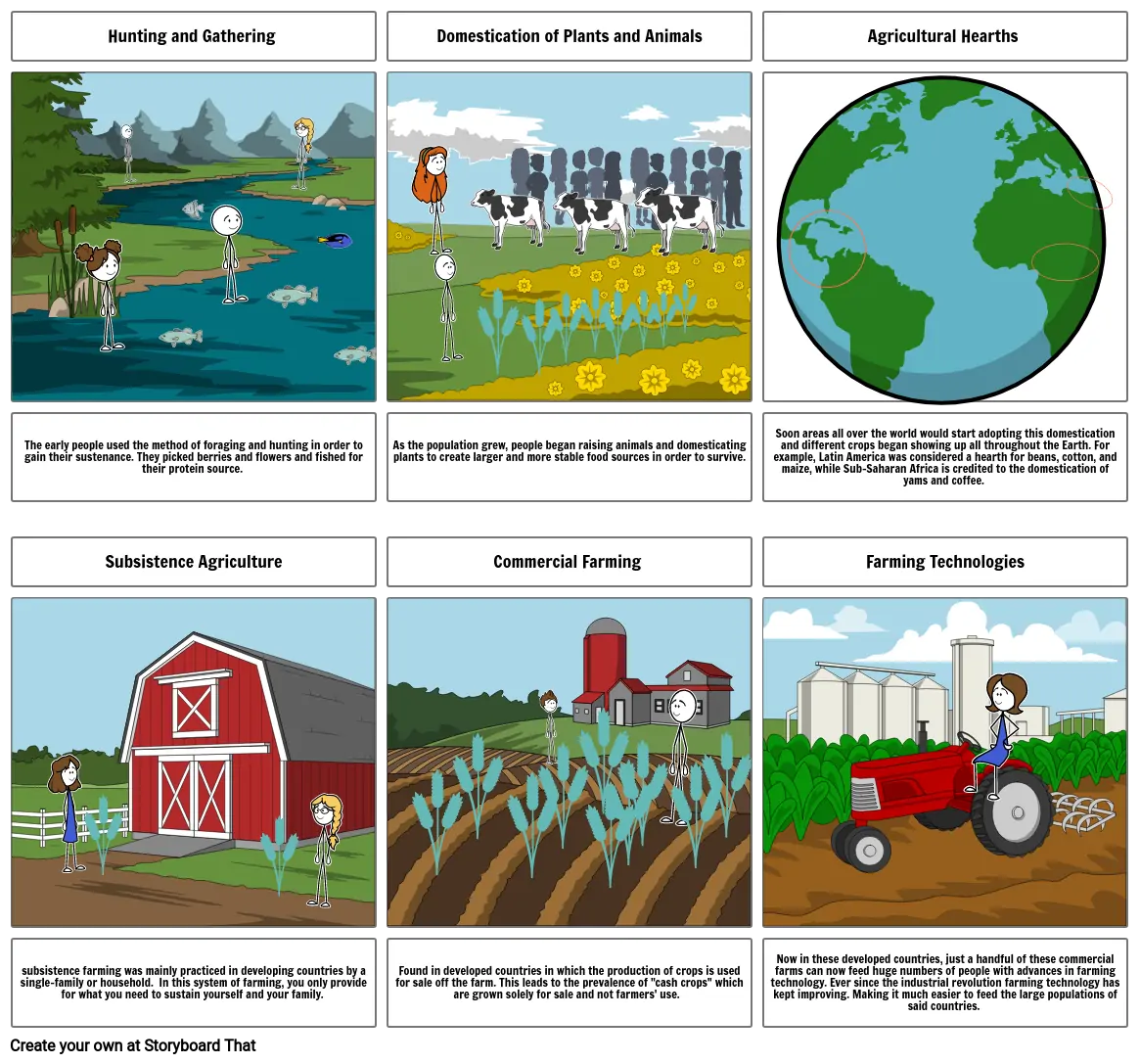Discovering the Distinctions In Between Commercial Farming and Subsistence Farming Practices
The duality in between business and subsistence farming techniques is noted by varying objectives, operational scales, and source application, each with extensive effects for both the setting and culture. Business farming, driven by earnings and efficiency, commonly uses sophisticated modern technologies that can lead to substantial environmental issues, such as soil degradation. Alternatively, subsistence farming stresses self-sufficiency, leveraging typical techniques to sustain family requirements while nurturing community bonds and social heritage. These different methods increase interesting concerns regarding the balance between financial development and sustainability. Just how do these different techniques shape our world, and what future instructions might they take?
Economic Goals
Financial goals in farming techniques often determine the techniques and scale of procedures. In commercial farming, the key economic purpose is to optimize profit. This requires a focus on efficiency and performance, achieved via sophisticated technologies, high-yield plant varieties, and extensive use fertilizers and pesticides. Farmers in this version are driven by market demands, intending to create huge amounts of commodities available for sale in international and national markets. The emphasis gets on accomplishing economies of range, ensuring that the expense per system output is lessened, thereby increasing earnings.
In comparison, subsistence farming is mostly oriented in the direction of satisfying the instant needs of the farmer's family, with excess production being minimal - commercial farming vs subsistence farming. While commercial farming is profit-driven, subsistence farming is focused around sustainability and durability, reflecting a fundamentally various set of economic imperatives.

Scale of Procedures
The distinction between industrial and subsistence farming comes to be particularly obvious when thinking about the scale of procedures. The scale of business farming allows for economies of range, resulting in reduced expenses per device through mass production, raised efficiency, and the capability to spend in technical developments.
In stark comparison, subsistence farming is typically small, focusing on creating simply sufficient food to satisfy the prompt needs of the farmer's household or neighborhood community. The land area involved in subsistence farming is typically limited, with much less accessibility to modern innovation or automation.
Resource Utilization
Commercial farming, defined by large operations, frequently uses sophisticated modern technologies and mechanization to maximize the use of sources such as land, water, and fertilizers. Precision farming is significantly embraced in business farming, using data analytics and satellite innovation to monitor plant health and maximize resource application, more improving return and resource performance.
In contrast, subsistence farming operates on a much smaller range, mainly to fulfill the instant demands of the farmer's household. commercial farming vs subsistence farming. Source application in subsistence farming is typically restricted by monetary restraints and a dependence on conventional methods. Farmers typically utilize manual work and natural deposits available locally, such as rain and natural garden compost, to grow their crops. The emphasis is on sustainability and self-direction as opposed to making the most of output. Subsistence farmers may face difficulties in source monitoring, including minimal access to enhanced seeds, fertilizers, and irrigation, which can limit their capacity to boost productivity and profitability.
Environmental Effect

Conversely, subsistence farming, practiced on a smaller range, usually utilizes traditional methods that are extra in harmony with the surrounding setting. While subsistence farming usually has a lower environmental footprint, it is not Full Report without difficulties.
Social and Cultural Ramifications
Farming techniques are deeply intertwined with the social and social material of communities, influencing and mirroring their worths, traditions, and financial frameworks. In subsistence farming, the focus is on growing sufficient food to meet the instant you could try here demands of the farmer's family members, typically fostering a strong sense of neighborhood and shared duty. Such practices are deeply rooted in local traditions, with understanding gave via generations, consequently maintaining social heritage and reinforcing communal ties.
On the other hand, commercial farming is mainly driven by market needs and profitability, typically causing a change in the direction of monocultures and large procedures. This method can cause the erosion of standard farming techniques and social identifications, as regional personalizeds and expertise are replaced by standard, commercial approaches. The emphasis on effectiveness and revenue can in some cases decrease the social cohesion found in subsistence areas, as financial transactions change community-based exchanges.
The duality in between these farming techniques highlights the broader social implications of farming options. While subsistence farming supports cultural connection and community connection, industrial farming aligns with globalization and financial development, typically at the expense of conventional social frameworks and cultural variety. commercial farming vs subsistence farming. Balancing these elements remains a crucial challenge for lasting agricultural growth
Verdict
The examination of commercial and subsistence farming practices exposes considerable differences in purposes, scale, resource usage, environmental impact, and social effects. Alternatively, subsistence farming highlights self-sufficiency, using regional resources and typical techniques, thereby advertising cultural conservation and neighborhood cohesion.
The duality between business and subsistence farming methods is noted by differing objectives, functional scales, and source utilization, each with extensive implications for both the setting and society. While business farming is profit-driven, subsistence farming is centered around look at this web-site sustainability and resilience, showing a fundamentally various collection of economic imperatives.
The difference between business and subsistence farming ends up being particularly evident when taking into consideration the range of procedures. While subsistence farming supports social continuity and area connection, industrial farming aligns with globalization and financial growth, often at the expense of conventional social structures and social variety.The evaluation of commercial and subsistence farming techniques exposes significant differences in goals, scale, source usage, environmental influence, and social ramifications.
Comments on “Exactly How Commercial Farming vs Subsistence Farming Impacts Food Safety Worldwide”